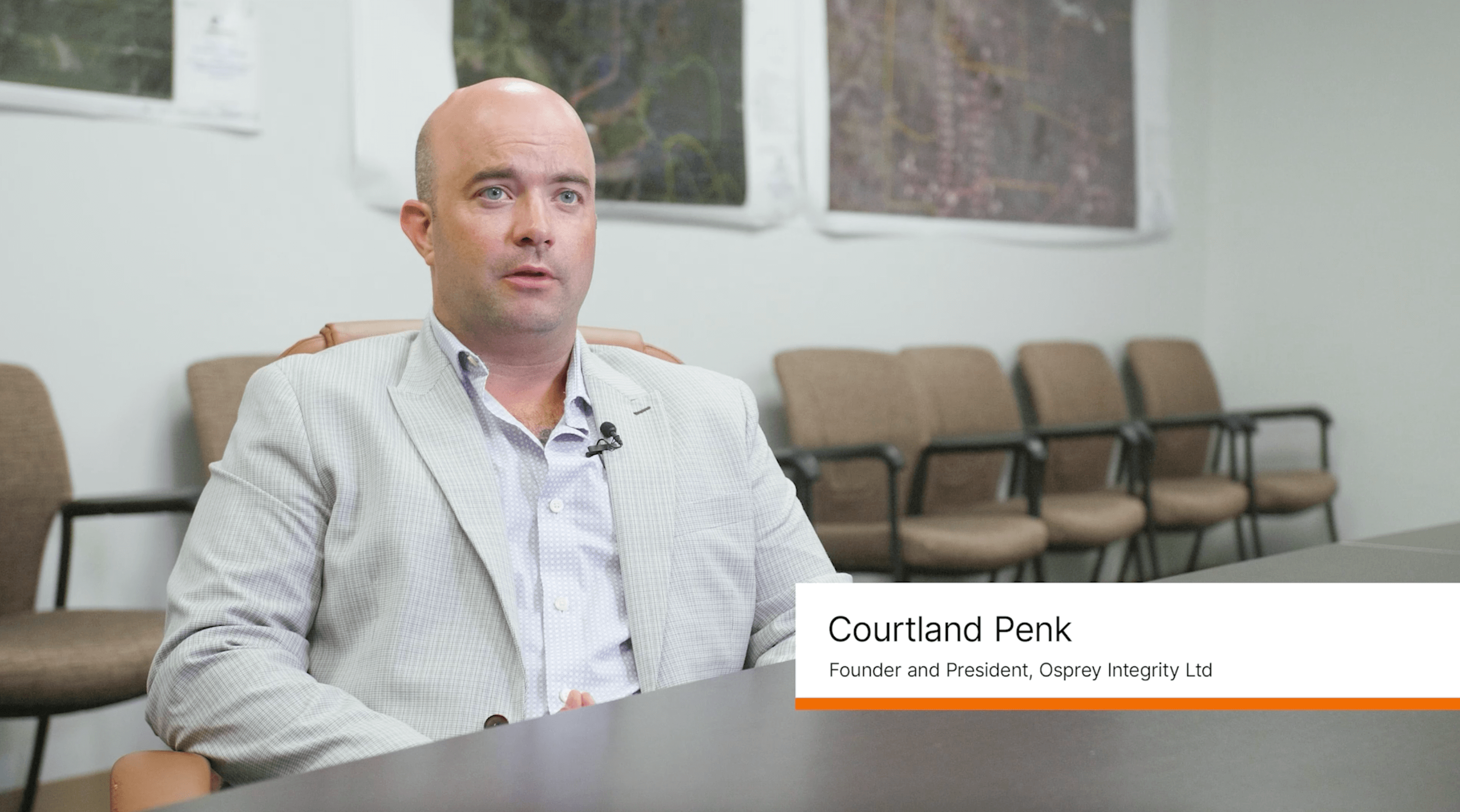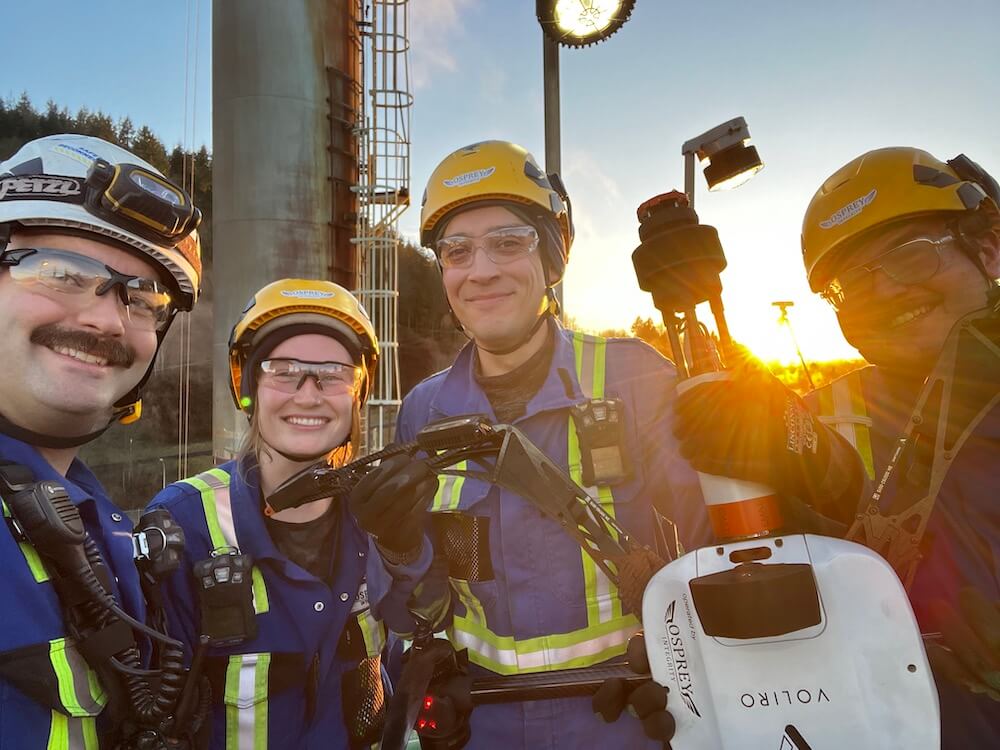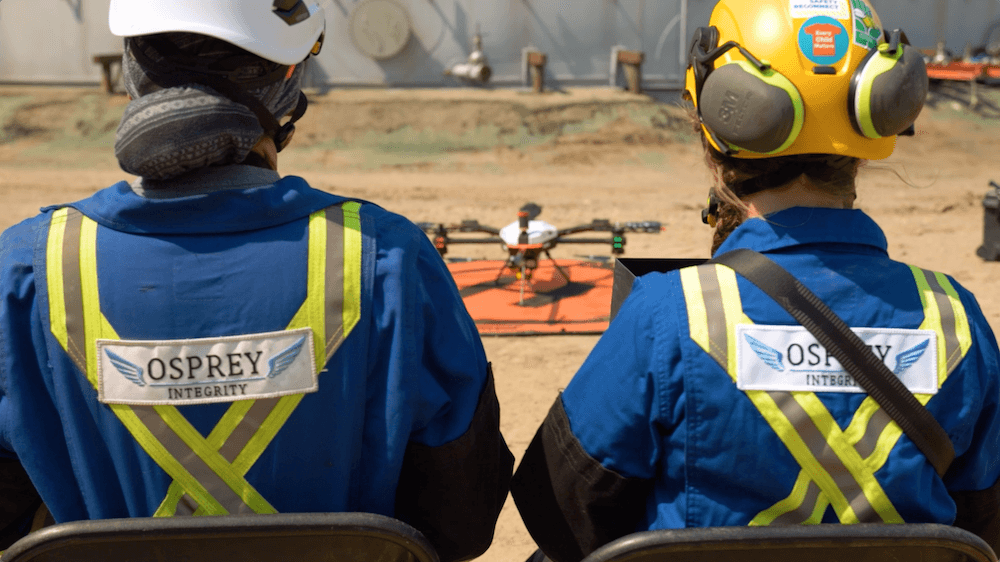
In the evolving landscape of Non-Destructive Testing (NDT), innovative technologies are spearheading changes that promise to redefine industry standards. Among the early adopters of such technologies is Courtland Penk from Osprey Integrity, a UAV-focused inspection service provider based in Canada. Courtland has been at the forefront, embracing the capabilities of Voliro T drone technology for NDT inspections.
In this interview, Courtland shares his insights on integrating Voliro T drones into Osprey Integrity’s operations and the unique challenges that come with adapting to drone technology. He also discusses his views on emerging technologies and methodologies poised to shape the future of NDT, outlining both the opportunities and challenges that could influence the sector’s trajectory.
In collaboration with Osprey Integrity we opened the first Voliro Flight Center in North America. This will enable Osprey Integrity to conduct on-site proof of concept demos showcasing Voliro T capabilities for asset owners and inspection service providers. Additionally, the Osprey crew will be able to train Voliro T pilots to the highest standard.
I first learned of the VoliroT back in very late 2020. I had been researching aerial NDT robotics and learned of a few early-stage companies that were developing payload integrations for drones or developing custom designs for drone contact with surfaces.
In late 2021, it became clear that Voliro was making the right decisions about product development and we’re becoming an industry front runner. I decided to reach out to Mina and Chris to see if there was still space in the small group of beta testers. Fortunately, they were excited about my experience in NDT and visual inspection and Osprey became just the 4th company globally to get on-board with Voliro.

We have developed relationships with two clients specifically who trust us to bring innovation news from the world of drone technology. So, our strategy was based on a slow and steady stream of information as the hardware continued to progress to a point it was ready for beta field testing.
We started to integrate the drone slowly and worked with clients to compare results to different conventional methods. Through this process, we learned from each operation (as we continue to do now) and made adjustments for continuous improvement.
This is a difficult question to answer truthfully because it really depends on what the inspection is. It is dangerous to make the claim that any robotic technology is affecting all inspections, so we like to talk about how drone UT is changing the game for two kinds of inspections in particular:
For inspecting assets that are prone to general corrosion, the drone is a big win on efficiency, costs, safety and still maintains the same level of effectiveness as conventional methods.
When it comes to screening difficult areas of assets, there are still big wins to be had, but there are additional questions that must be asked in advance to see if it’s a good fit for drone/robotic technology and their associated limitations given the current capability of the technology.
By conducting appropriate screening via robotics, Risk Based Inspection programs and Reliability Engineering teams can develop a more detailed understanding of the asset as a whole to help them develop more cost-effective inspection programs where the thorough inspections are taking place in locations based on preliminary evidence that suggests further investigation is needed.
Interchangeable payloads are simply fantastic! The current capabilities and the invitation to third party developers to create new functions is exceptional!
Additionally, the ability to change the contact angle on the fly is unlike anything else anywhere.

I think every time we go flying it’s a win with the Voliro. Over the past 2 years flying the machine, we’ve managed to keep it fairly busy all while educating the industry, developing standardized operating procedures that meet the needs of our growing client base and delivering quality results – those are all big wins everyday in my books when considering something is so positively disruptive.
I would say it’s largely untapped right now, with a few exceptions. Traditional inspection companies typically earn fairly low margins, and therefore rely on the volume of workers to make their money.
For this reason, I don’t think that most people in these companies are even aware of the technology right now. It’s growing slowly, yes, but every time we’re on site doing work with the Voliro there are people who are shocked and ‘Had never heard of such a thing’. Unfortunately, this is true from bottom to top in some organizations.
Once exposed/educated on the tool, the responses have been mixed from the NDT technicians, or visual inspectors, themselves because it’s alien to them. The maintenance planners, the schedulers, and management are all very keen and interested because they see the value in reducing costs.
The interesting part is that we need buy-in from both groups for the tools to be accepted and successful.
Once exposed/educated on the tool, the responses have been mixed from the NDT technicians, or visual inspectors, themselves because it’s alien to them. The maintenance planners, the schedulers, and management are all very keen and interested because they see the value in reducing costs.”
Courtland Penk
CEO, Osprey Integrity
Microwave nondestructive testing (MNDT) is gaining some traction in NDT.
Advancing Phased Array Ultrasonics and Eddy Current Array technologies are something to watch (In particular, Eddy Current Array from a drone perspective for crack detection on steel)
Challenges:
Opportunities:

Have assets to inspect in Canada or the United States? Reach out to us contact@voliro.com or Osprey Integrity.